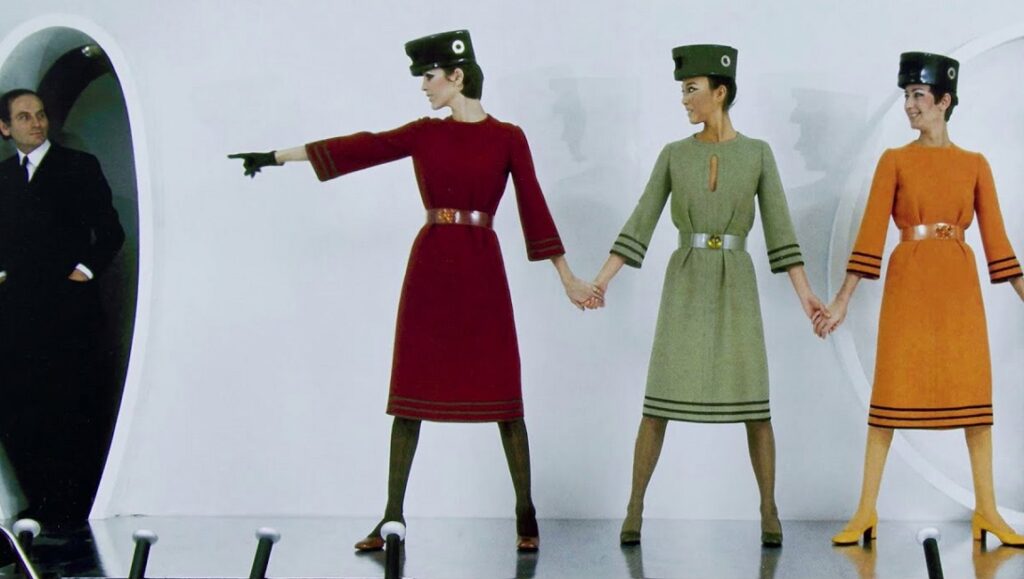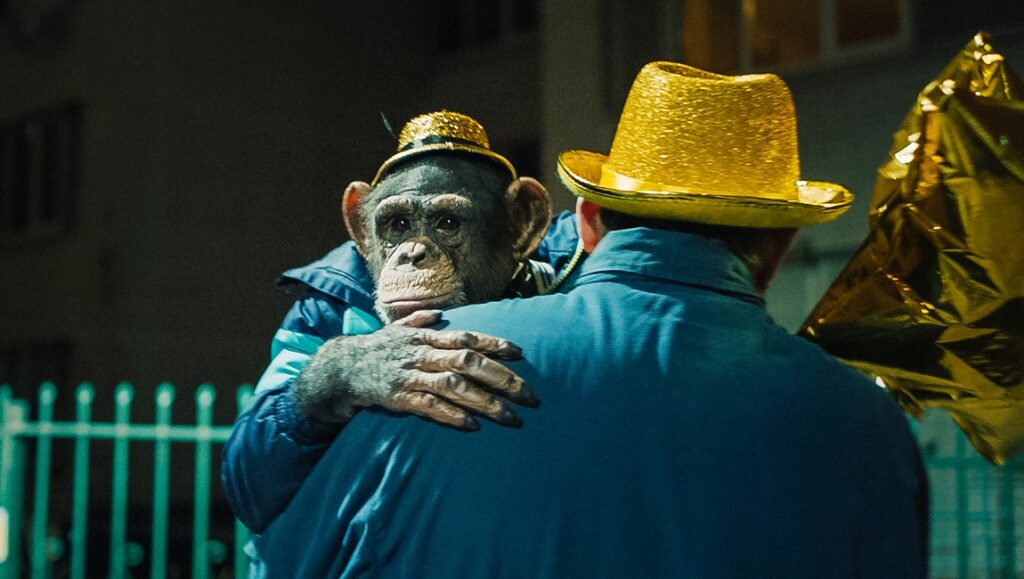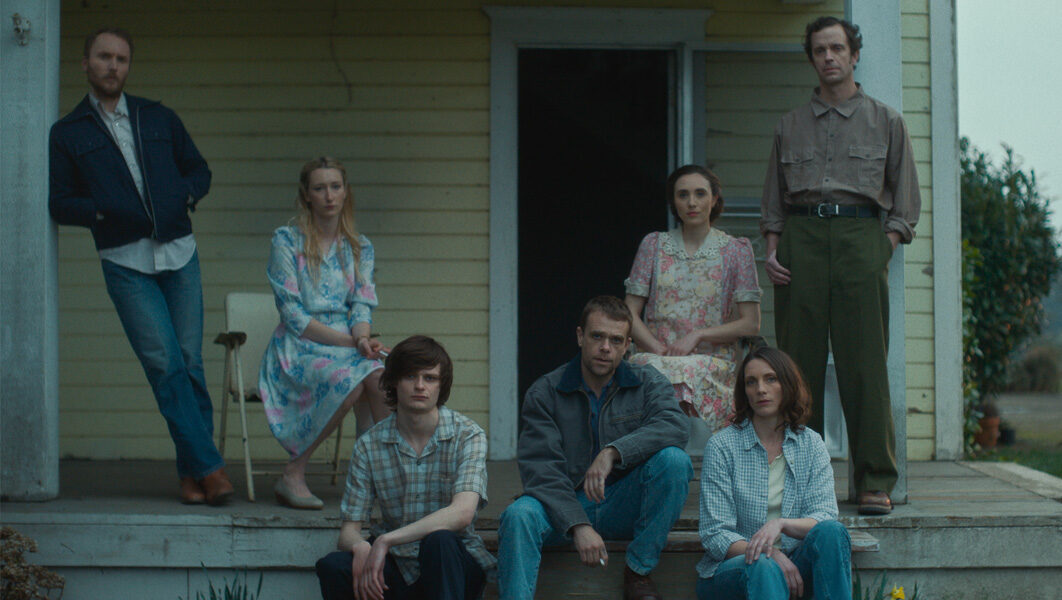OK, so things don’t really vanish anymore: even the most limited film release will (most likely, eventually) find its way onto some streaming service or into some DVD bargain bin assuming that those still exist by the time this sentence finishes. In other words, while the title of In Review Online’s monthly feature devoted to current domestic and international arthouse releases in theaters will hopefully bring attention to a deeply underrated (even by us) Kiyoshi Kurosawa film, it isn’t a perfect title. Nevertheless, it’s always a good idea to catch-up with films before some… other things happen.
Ottolenghi and the Cakes of Versailles
Laura Gabbert has a knack for pairing gastronomy and film — as in her 2016 documentary, City of Gold, which profiles Jonathan Gold, the first food critic to win a Pulitzer Prize. Gabbert’s latest, Ottolenghi and the Cakes of Versailles, follows renowned Israeli chef Yotam Ottolenghi, who, in 2018, was approached by the Metropolitan Museum of Art to create desserts for an event held in homage to the notoriously decadent palace. Ottolenghi’s hand-picked team of confectioners includes Ukrainian baker Dinara Kasko, who applies an architectural sensibility to her dazzlingly modern cakes, and Janice Wong, a Singaporean who composes large-scale centerpieces akin to edible murals. To provide context for the event held at the Met, Gabbert includes interviews with museum curators and food historians that explore the cultural and social mores of 18th century France through the multifaceted lens of food. We learn about early baking technology, such as the practice of creaming sugar and butter to produce an ersatz form of refined sugar, or using pastry crust to preserve food (since the court predated plastic and other single-use materials). And as Ottolenghi and the Cakes of Versailles progresses, it’s clear that Versailles itself, which was never again used as a royal palace after the beheadings of Marie Antoinette and Louis XVI in 1793, can symbolize almost anything to anyone; it’s occupied the public imagination for so long that it is as much an idea of a place as a place itself.
Unfortunately, reckoning with this duality is where this film falters. In assessing Versailles’s function as a political powerhouse for the monarchy and aristocracy — as a social hub for citizens of all classes and backgrounds, a cultural crossroads for foreign visitors and ambassadors, and a testing ground for the latest culinary innovations — Gabbert merely skims the surface of her ideas. Likewise, the footage of chefs preparing their centerpieces is only nominally interesting; we don’t actually see British duo Sam Bompas and Harry Parr create their signature jellies, but do focus on a staff member as she and a Met electrician fix some gadget. And knowing what we do about the downfall of the French monarchy, the connection between their ill-fated decadence and the Met Museum’s own opulence in producing this lavish, two-day event is almost painfully obvious. Still, at its best, Ottolenghi and the Cakes of Versailles is similar to behind-the-scenes documentaries like The First Monday in May, another Met-themed movie where viewers are granted a sneak peek into the creative process of people who elevate their craft into artistic mastery. Beyond that, it’s a diverting but ultimately unsatisfying 75 minutes, simultaneously too short and too cluttered to meaningfully explore all the fascinating implications it presents. Selina Lee
House of Cardin
Pierre Cardin, indisputably, is one of the most iconic names in the realm of fashion — known to many as a genius, a hyper-modernist, an avant-garde designer. Italian-born but France-based, Cardin helped to revolutionize fashion in the ‘60s and ‘70s with his futuristic, unconventional vision. He’s a true socialist who often speaks of himself in the third person (as an independent entity or, perhaps, a sentient brand), and who not only brought haute couture into ready-to-wear and hoi polloi wardrobes (causing the wrath and jealousy of his rivals, like Yves Saint Laurent), but also shattered boundaries of discrimination by hiring models of diverse races and ethnicities. Co-directors P. David Ebersole and Todd Hughes clearly have all this in mind as they attempt to shed further light on the life and work of a man who’s often considered to be an enigma; their House of Cardin uses rich archival footage, photographs, video clips from various catwalk shows, and a wide-range of talking-head interviews (designers, actresses, and models, but also artists, journalists, collectors, friends, co-workers — and, of course, Cardin himself). And thanks to a rhythmic and energetic deployment of montage, along with a terse soundtrack, this film turns into a quite entertaining roller-coaster ride — one that shapes a free-flowing narrative and visual structure that pretty much resembles Cardin’s pop-art (especially the geometric designs of his “astral period”).
One issue that Ebersole and Hughes’s film has is the same that a lot of portrait-documentaries struggle with, that being how to mount a comprehensive investigation of a cultural or historical paragon in a limited time, without leaving much of the subject matter only glossed over. One can easily imagine how this quandary becomes even more vexing when it comes to profiling a 98-year-old workaholic like Cardin, whose nonstop professional achievements — from the fields of fashion to cinema to theater — span almost seven decades, and whose empire-sized enterprise and inspiring influence are scattered and global. A luminary, as well as something of a “sell-out” superstar, Cardin can recollect his memories and recount fabulous stories about his friendships with Jean Cocteau, Pier Paolo Pasolini, and Luchino Visconti; about a meeting with Marlene Dietrich and some political leaders, or his unyielding affection for both actress Jeanne Moreau and Andre Oliver (the latter being Cardin’s main assistant for more than 40 years until his death in 1993). Somewhat understandably, Ebersole and Hughes are tempted to cover as many of these threads as they can — but end up doing so with an unproblematized biographical approach that hastily leaves some of the stories and topics under-developed. Perhaps this could have been a more effective and engaging work in the form of a mini-series — or if the filmmakers had opted for a more in-depth, but narrower, scope. For better and for worse, House of Cardin manages to be an informative and convivial homage to a man who changed the outlook of our contemporary world and freed the notion of “beauty” from its well-established traditions and hierarchical orders. Ayeen Forootan
Guest House
One of 2020’s greatest mysteries is how a film like Guest House received funding? Ostensibly conceived as a star vehicle for the Laurence Olivier of ‘90s high-concept comedies — which could only ever refer to former MTV VJ Pauly Shore — perhaps the producers thought invoking a little Gen-X nostalgia would guarantee some sort of audience. Strangely, then, Shore barely features in this shitshow of a film, truly one of the worst things to be released in ages, and its stable of writers — including, of all people, Mr. Boondock Saints himself, Troy Duffy — seem to have forgotten what was so appealing about The Weasel in the first place: his babe-in-arms likeability. He was easy to root for throughout his family-friendly, PG-13-rated antics, all surfer-speak and good-guy vibes.
The Shore on display in Guest House is a drug addict prone to fits of misogyny and gay panic, all of his actions needlessly mean-spirited until the film’s deplorable ending, where his character suddenly does an about-face because, hey, people love Hallmark films. That’s not to say that anyone in this film is the least bit tolerable, and certainly not the lead “protagonists”: Blake (Mike Castle) and Sarah (Aimee Teegarden) are a happily engaged couple who buy their dream home and end up inadvertently becoming landlords to Randy Cockfield (Shore), a burn-out who lives in the guest house. The film sets up an epic battle between the straight-laced couple and the carefree Randy, but it takes literally half of the film’s brief 84-minute running time to finally reach this point, and there’s no clear reason for the feet-dragging; a lot of full-frontal female nudity and jokes about overweight women take up most of the unpalatable downtime.
Once the film finally gets down to its apparent business, it presents a series of comedic set-pieces that are impressive for the sheer ineptitude with which they are executed. To regard director Sam Macaroni’s filmmaking as even passable would be an act of intellectual charity. A lot of slow-motion is employed, which only works here to further draw out unfunny situations and allow the viewer to zero in on what is wrong (which, it turns out, is everything). “Star-studded” cameos from the likes of Steve-O and Lou Ferrigno and Billy Zane fail to make much of an impact because they are given nothing to do; and they know it, mostly looking like they would rather be anywhere else. Chris Kattan’s brief appearance as a delivery man, however, is so absolutely insane that it almost has to be seen to be believed (although that’s not recommended). Kato Kaelin has had more fun in a guest house than any viewer unfortunate enough to stumble upon this abomination. The Weez deserves better. Steven Warner
Space Dogs
Space Dogs finds directors Elsa Kremser and Levin Peter misty-eyed and looking up at the stars, convening mythologies surrounding the Space Race. But the filmmakers also take moments to look down — at the descendants of wolves running amok through the streets of Moscow, their howls reaching back up towards the narratives projected through to the sky. Here, observation takes on a subversive role: sporadically exhibited archives of the Soviet Space program’s training for dogs lay the foundation for the film’s hollowed-out structure, which is meant to be filled by our own sense of story and narrative. Kremser and Peter follow the unknowable trajectories of street dogs — their intimidation, fears, and hunger, all of which can of course only be inferred. Just as the film’s poster renders the image of Laika (the very first animal sent into Earth’s orbit) in the night’s stars, so do we as spectators project emotion into the growls, yelps, and barks that can so often be heard under the cover of darkness. This desire to rationalize these gestures into sentiment can be confounding — though while observing these dogs, it becomes clear that the narratives constructed around them in the film are simply card tricks and illusions. They project human psychology onto fundamentally inaccessible creatures.
What remains is the numbness that our knowledge of this vacancy creates; we remain at an arm’s length from these inquisitive animals, their jerking violence and random fervor. The canines are often shown baring their teeth at each other, often for no discernible reason. We are unable to engage with them in any meaningful way beyond conjecture, beyond what is meaningful to us. In a sense, though, this discrepancy is what is most fascinating about the film, and contributes to its awestruck explorations of space: Unable to extrapolate human feeling from these creatures, we are forced to gather around the fire and tell ghost stories under the night sky, as the images of dogs form in the constellations above. Zachary Goldkind
Rent-a-Pal
Rent-a-Pal, the debut feature from writer-director-editor Jon Stevenson, is unrelentingly bleak, a 108-minute cringe-fest masquerading as a character study. Not that there is much to glean from the protagonist as presented here, a bespectacled sad sack named David (Brian Landis Folkins) desperate for human connection. The year is 1990, and as the film opens, David is seen viewing potential prospects from a pricey video-dating service, none of whom have shown the slightest interest. David is 40 and lives with his dementia-addled mother, putting his own life on hold to tend to hers — or perhaps using his current circumstance as an excuse to disengage from life entirely. Therein lies the film’s major problem: David is a loner, but he is indeed making some sort of effort. Rent-a-Pal willfully continues to forget this fact, going out of its way to present him as nothing more than a pathetic loser. David is the type of man who stumbles across the titular videotape — which features an unnervingly affable Wil Wheaton as a middle-aged man who promises to be your own personal VHS best friend — and almost immediately descends into obsession, rewinding the tape over and over to engage in disconcerting, unhealthy banter on an endless loop. It is obvious that Wheaton is nothing more than David’s fractured id, growing more sinister with each passing, monotonous day as David deals with his aging mother’s failing memory and inability to take care of herself. Discussion of David’s past reveals an unhappy childhood filled with abuse and bullying, so clearly the film wants to engender sympathy for our protagonist, and yet his actions at film’s end are so reprehensible that they seem to exist solely for shock value. That’s not to say that his actions are in any way surprising; Stevenson takes so much pleasure in wallowing in David’s awkwardness and misery that the viewer is simply left impatiently waiting for the other shoe to inevitably and thuddingly drop. Rent-a-Pal is pitched at the same tenor as Philip Seymour Hoffman’s storyline from Happiness, and indeed plays a lot like if Todd Solondz made the choice to build that entire film around his repellent loner, minus all of the offputting sex stuff. In other words, there’s nothing to be gained from the oppressing experience. Rent something else. Steven Warner
Ghost Tropic
The long-standing theoretical association made between watching cinema and being in a dream-like state is one that’s rooted in a firm misunderstanding about the autonomy of the viewing public, seeming to suggest that an audience member is a sort of malleable object — one by which any form of visual or verbal logic will automatically be taken at face value and synthesized with little resistance. What can give this argument some amount of credence is an acknowledgment that mainstream cinema serves to pacify viewers, which is something a dream is able to accomplish for the moments in which they are perceived as reality. This somniferous state of being is itself an affect, and one that carries a flat tone in most international arthouse cinema, working in tandem with obnoxious master shots and insistent moralizing.
What’s left when these more auteurist-driven instincts are toned down is something close to Bas Devos’ latest feature, Ghost Tropic. There’s a strange, hypnagogic beauty to the way the film operates both on an overarching structural level and on a scene-by-scene basis; it’s rare to find narrative cinema with editing rhythms this gentle, this unconcerned with creating extraneous drama or tension. Custodial worker Khadija (Saadia Bentaïeb), after sleeping through her stop on the local metro, meanders through Brussels as she attempts to return home; that’s about it in terms of dramatic stakes, and even the emotional ones are relatively muted as far as what’s accomplishable within the framework of the narrative. She tries to get on a bus at one point, but the bus breaks down. She tries to call a cab, but she doesn’t have enough money. She gets a ride from a gas station attendant, but exits the car early for personal reasons. It’s all a bit one-note, but Devos is at least attuned enough to the material on a sociopolitical level to where he never makes these moments feel cheap, nor does he at any point make Khadija a source for easy pity. Like most nocturnal reveries, Ghost Tropic doesn’t level much of an immediate impact but instead floats comfortably between the cracks of one’s consciousness, its brevity reflecting the very evanescence of dreaming. Paul Attard










